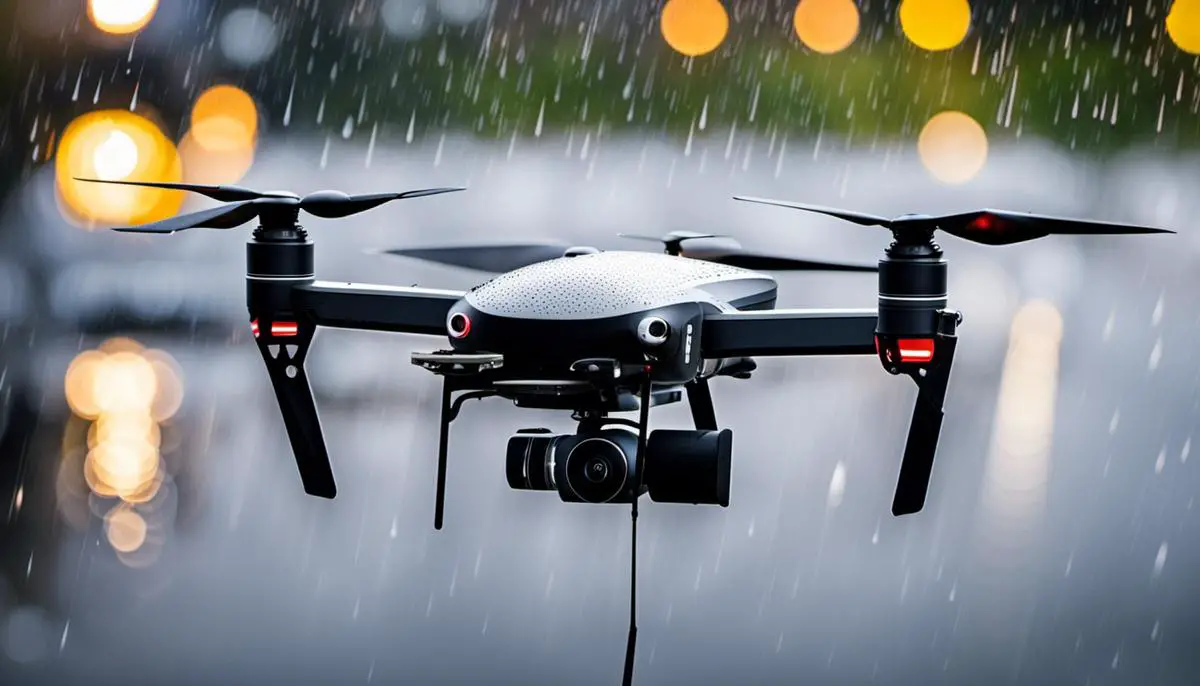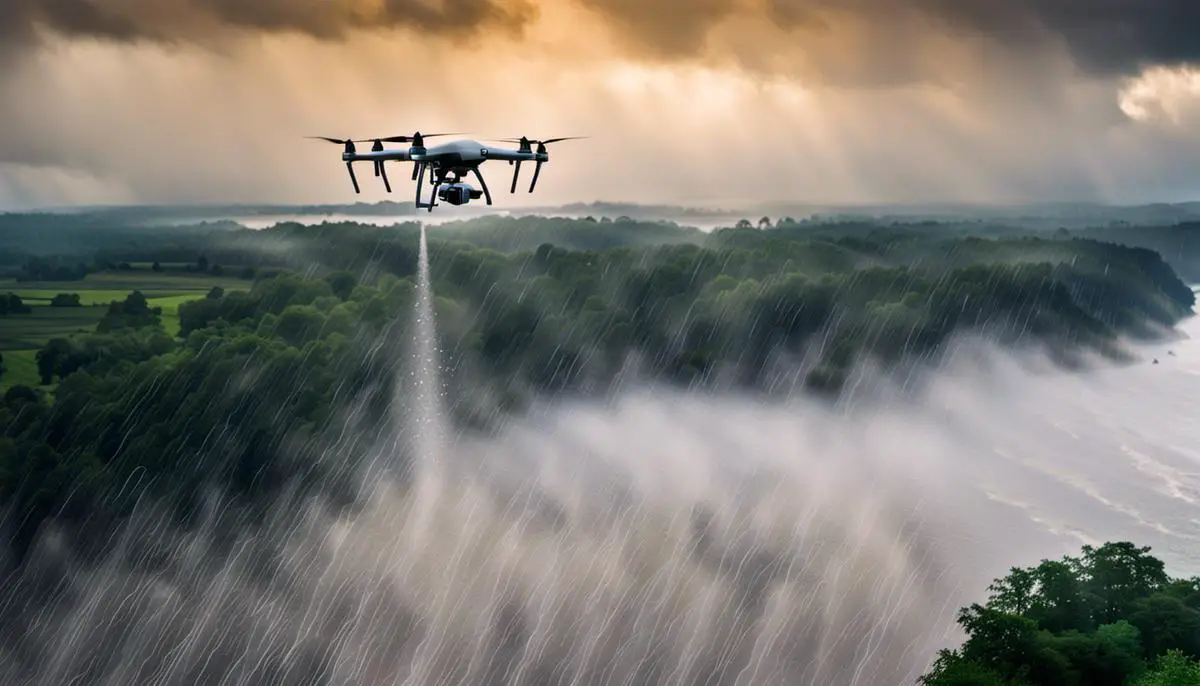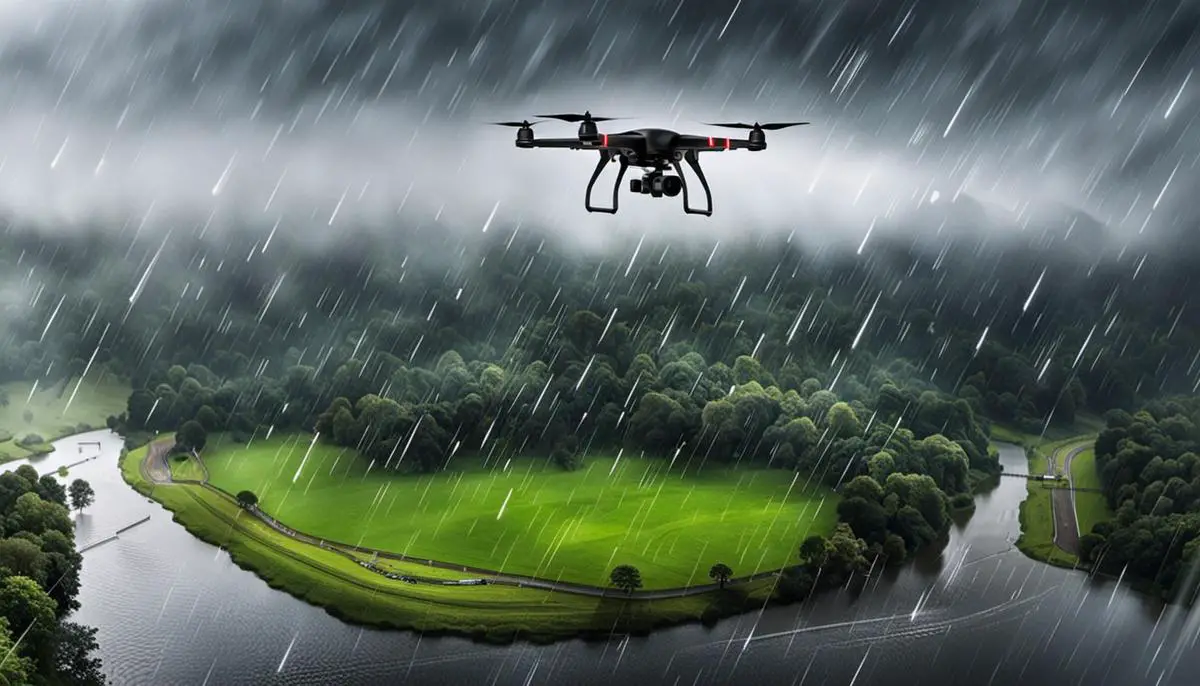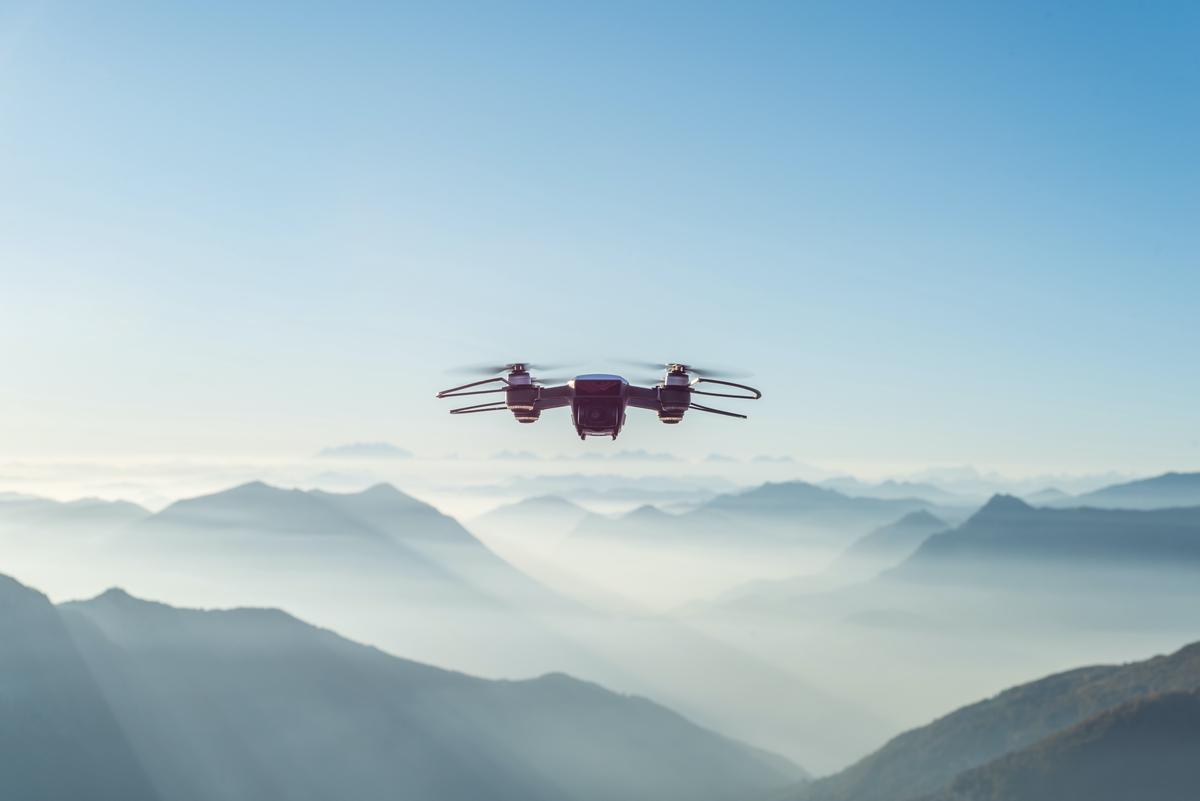Flying Drones in Rain: What You Must Know & Safety Measures

As technology advances, drone usage has surged for various applications, be it professional photography, site inspections, or even leisurely pursuits. However, despite these advancements, one element remains a significant challenge: the weather. Particularly, rainfall can significantly impact the successful operation of these unmanned aerial vehicles. Understanding the intricacies of how rain affects drones, the potential risks involved, the preventive measures that can be taken, and the pertaining legal implications is essential for any drone operator. Thus, this discussion would discover the risks of flying drones in rain and how to protect your drone from water damage. Stay safe while capturing aerial footage!.
The Impact of Rain on Drones
Impact of Rain on Drone Operation
Rain can greatly impact the functionality of drones, affecting both the electronic components and the overall operation. The electronic elements that make up the drone, such as the camera, GPS, and battery, can be damaged by water infiltration. Even if your drone is advertised as “weather-resistant,” the electronic components could still be at risk. Moisture, particularly in large amounts like during a downpour, can cause short-circuits and electrical malfunctions, which could cause the drone to fail mid-flight or even become permanently damaged.
Visibility and Control of Drones in Rain
Rain not only threatens the physical integrity of drones but also affects the user’s control during flight. Rain reduces visibility, making it challenging to navigate and potentially leading to collisions. The wet surfaces can also interfere with the drone’s sensors, affecting their ability to detect obstacles and navigate accurately. Given these risks, manufacturers often recommend against flying drones in rainy conditions.
Operating a drone in less-than-ideal weather can be challenging. Yet, there could be situations where it may be necessary to do so. In such instances, being well-aware of the associated risks and taking vital precautions can make the operation safe as possible. Nonetheless, it’s generally agreed upon among drone enthusiasts and professionals that flying drones in heavy rain should be avoided whenever feasible to prevent potential damage and safety risks.

Preventive Measures and Possible Solutions
Preparing to Fly a Drone in the Rain
It can prove highly beneficial for drone operators to take proactive steps such as learning to interpret weather forecasts. Mastering the art of understanding meteorological reports and detecting signs of incoming harsh weather conditions like storms can help you to ensure your drone isn’t caught in the rain. Telltale signs to note include a darkening sky, sudden wind gusts, or a drop in temperature, all of which might suggest that it’s time to navigate your drone back to a safe location. In addition, investing in a waterproof or water-resistant drone can be a wise move, especially for frequent flyers. Such drones are designed to ward off water damage, thereby offering an extra protective layer in case of unexpected weather.
Preparing for Unexpected Rain During Drone Flights
If you find your drone in the midst of an unplanned shower, there are prompt steps you can take to minimize damage. The initial response should be to land the drone as swiftly and safely as possible, reducing the time it endures the rain. Accessories such as waterproof tape or water-resistant sprays may be used to safeguard the drone but remember this could invalidate your warranty. Always make sure to consult your drone’s instruction manual or a drone professional before undertaking Do-It-Yourself waterproofing initiatives.

Regulations and Legal Implications
Understanding the Legal Perspective and Regulations
When deciding to operate your drone during precipitation, the considerations are not just technical; there are also legal aspects to think about. Different areas maintain specific laws concerning drone usage in unfavorable weather, and ignorance of these rules is no excuse. It is vital to comprehend the laws applicable in your locality by contacting local aviation authorities or regulatory bodies.
Disregarding these rules can invite potential legal consequences – from fines to, in more severe circumstances, criminal charges. Thus the question becomes not merely “Can you fly a drone in the rain?”, but “Should you fly a drone in the rain?” according to your local rules.
Responsible drone operation goes beyond merely preventing crashes or damage to the device. Abiding by restrictions and regulations ensures legality, safety, and ethical considerations. Thus, prior knowledge of the concerned laws ensures both personal and public safety.

Photo by asoggetti on Unsplash
As you navigate your way into the realm of drone operation, it’s crucial to remember that responsible usage goes beyond mastering controls and managing technical glitches. It also involves a level of respect and understanding for the environmental elements, particularly rain, and adherence to regulations set forth by the corresponding authorities. So, remember, while the sight of a drone soaring against a rain-slicked backdrop can appear cinematically appealing, it’s vitally important to understand the potential operational risks, apply preventive measures and be aware of the legal implications. Keep exploring, stay informed, fly responsibly, and let the sky be your limitless canvas, even as you master the art of drone flying.
FAQs for Flying Drones in Rain
Q: Can I fly drones in rain? A: It is generally not recommended to fly drones in rain. Flying drones in rain can pose risks to the drone’s electronics, motors, and overall flight stability. Water can damage the drone and potentially cause a crash.
Q: Are there drones specifically designed for flying in rain? A: Yes, there are drones specifically designed for flying in rain or wet conditions. These drones are typically waterproof or water-resistant and have special features to protect their components from water damage.
Q: What are the risks of flying drones in rain? A: Flying drones in rain can expose the drone’s electronics to water, leading to short circuits or component failure. Rain can also affect flight stability, visibility, and the performance of the drone’s sensors, resulting in a higher risk of crashes.
Q: Can rain damage the camera or gimbal of a drone? A: Yes, rain can damage the camera or gimbal of a drone. Water droplets on the lens can affect image quality, and excessive moisture can cause damage to the delicate moving parts of the gimbal, impacting stabilization and control.
Q: Are there any precautions I can take if I need to fly a drone in light rain? A: If you must fly a drone in light rain, there are a few precautions to consider. Ensure the drone has water-resistant features or covers, avoid flying in heavy rain or thunderstorms, and fly at lower altitudes to minimize exposure to moisture.
Q: Will flying a drone in rain void its warranty? A: It depends on the manufacturer and the specific terms of the warranty. Some drone warranties specifically exclude damage caused by water exposure or flying in rainy conditions. It is essential to review the warranty documentation for accurate information.
Q: Can I use a waterproof drone in heavy rain without any issues? A: While waterproof drones are designed to withstand light rain or drizzle, it is still not recommended to fly them in heavy rain or downpours. Even waterproof drones have limitations, and flying in heavy rain can increase the risk of water damage and flight instability.
Q: Can rain affect the drone’s battery performance? A: Rain can potentially affect the battery performance of a drone. Water intrusion into the battery compartment or excessive moisture exposure can damage the battery and reduce its capacity or cause malfunctions.
Q: How can rain affect the flight stability of a drone? A: Rain can affect the flight stability of a drone by interfering with the drone’s sensors, such as the GPS or optical flow sensors, which rely on clear visibility. Wet conditions can also make it harder for the drone to maintain stable flight, increasing the risk of instability or control issues.
Q: Should I dry my drone after flying in the rain? A: If your drone has been exposed to rain or moisture, it is essential to dry it thoroughly before storage or further use. Wipe off any water droplets, use a dry cloth to absorb moisture, and allow the drone to air dry completely to prevent potential damage.
Flying drones in rain is generally discouraged due to the associated risks of damage and compromised flight stability. It is advisable to prioritize the safety and longevity of your drone by avoiding rainy conditions and considering weather-resistant alternatives if you require drone operations in wet environments.








